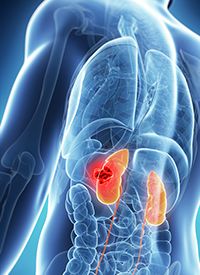Article
Molecular Subtypes Prognostic for OS, DFS in Clear-Cell RCC
Author(s):
Four molecular subtypes of clear-cell renal cell carcinoma were prognostic for outcomes after metastasectomy, with striking differences seen in overall survival and disease-free survival between each of the groups.

Four molecular subtypes of clear-cell renal cell carcinoma (ccRCC) were prognostic for outcomes after metastasectomy, with striking differences seen in overall survival (OS) and disease-free survival (DFS) between each of the groups, according to findings presented at the 2017 European Multidisciplinary Meeting on Urological Cancers (EMUC).
“Subtype may aid in patient selection after clinical selection. The differences between relapse rate and survival were striking,” said Annelies Verbiest, a PhD candidate, based on research from KU Leuven, Belgium. “Clear-cell renal cell carcinoma subtypes have intrinsic differences that are correlated with survival, response to systemic therapy, and with response to metastasis-directed therapies. These are not just prognostic but also predictive.”
The molecular subtypes (ccRCC 1 to 4) were determined using a 35-gene classifier, with each classification having a different gene expression profile. Prior research conducted by Verbiest and others suggests that 2 of these subtypes, ccRCC 2 and 3, have a good prognosis while subtypes ccRCC 1 and 4 have poor prognosis.
“Patients with subtypes 2 and 3 who are treated with sunitinib (Sutent) or pazopanib (Votrient) usually respond well to therapy,” she said. “However, because surgery is associated with comorbidity, it might be best to avoid it in ccRCC 1 or 4 patients, as they are almost sure to relapse early.”
The study presented at EMUC involved 32 patients, 22 of whom were found to have subtypes ccRCC 2 and 3. Study objectives included correlating the molecular subtype with DFS, time to systemic therapy, and OS after complete metastasectomy. In the overall study population at median follow up of 62 months (range, 20-143), the median DFS was 14.5 months (5-year DFS rate, 24%). The time to systemic therapy was 57 months and the median OS was 133 months (5-year OS rate, 60%).
When the subtypes were categorized, there was a marked improvement in outcomes for those classified as having a good versus poor prognosis. In categories 2 and 3, the median DFS was 21 month (5-year DFS rate, 33%) compared with a median of 9 months (5-year DFS rate, 0%) for those in the ccRCC 1 and 4 groups (HR, 2.58; P = .009). For time to systemic therapy, the median was 90 months for the ccRCC 2 and 3 groups versus 29 months for ccRCC 1 and 4 (HR, 363; P = .003).
The median OS in the ccRCCn2 and 3 groups was 133 months (5-year OS rate, 85%) compared with a median OS of 50 months (5-year OS rate, 19%) for the ccRCC 1 and 4 groups. This represented a significant reduction in the risk of death for those in the good prognosis arm (HR, 5.47; P <.001).
“The survival outcomes after metastasectomy are much better for the good-prognosis subtypes when compared with the poor-prognosis subtypes,” Verbiest said. “The interesting part is that in other research, conducted by us and other research groups, we have seen that the poor-prognosis subtypes are correlated with more prognostic features.”
The next step for the research, said Verbiest, is to determine whether these subtypes are not only prognostic but can also predict responses to systemic therapy. “We already know that the good-prognosis subtype responds well to angiogenesis inhibitors,” she said. “But one of the poor prognostic subtypes—ccRCC4—has a gene expression profile that is very inflammatory. It has a high expression of immune checkpoints, and we think this subtype will respond well to immune checkpoint inhibitors.”
There is an abundance of ongoing biomarker research but few biomarkers reach the clinic. It will be valuable to understand intrinsic subtypes of RCC apart from all the new therapies that are evolving rapidly, she said.
“I think the new trends in clear-cell renal cell carcinoma seems to be looking at the combination of angiogenesis inhibitors and immune checkpoint inhibitors,” she said. “I think we’ll have to find some biomarker to predict which patients may be receptive to angiogenesis inhibitors, checkpoint blockade inhibitors, or some combination of the two.”
Verbiest A, Couchy G, Job S, et al. Molecular subtypes of clear-cell renal cell carcinoma are associated with outcome after metastasectomy with curative intent. Presented at: 2017 EMUC Congress; Barcelona, Spain; November 16-19, 2017. Abstract O1.








